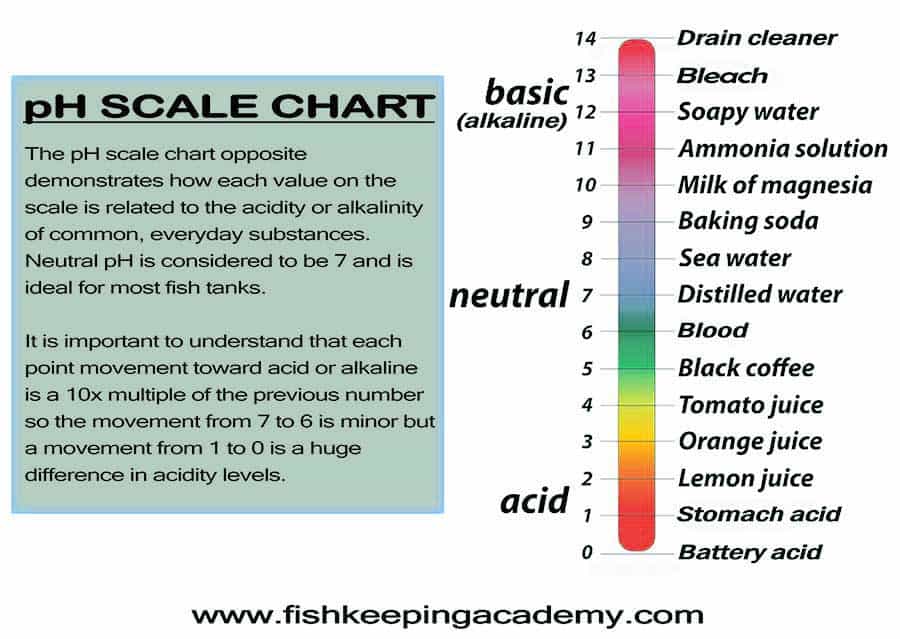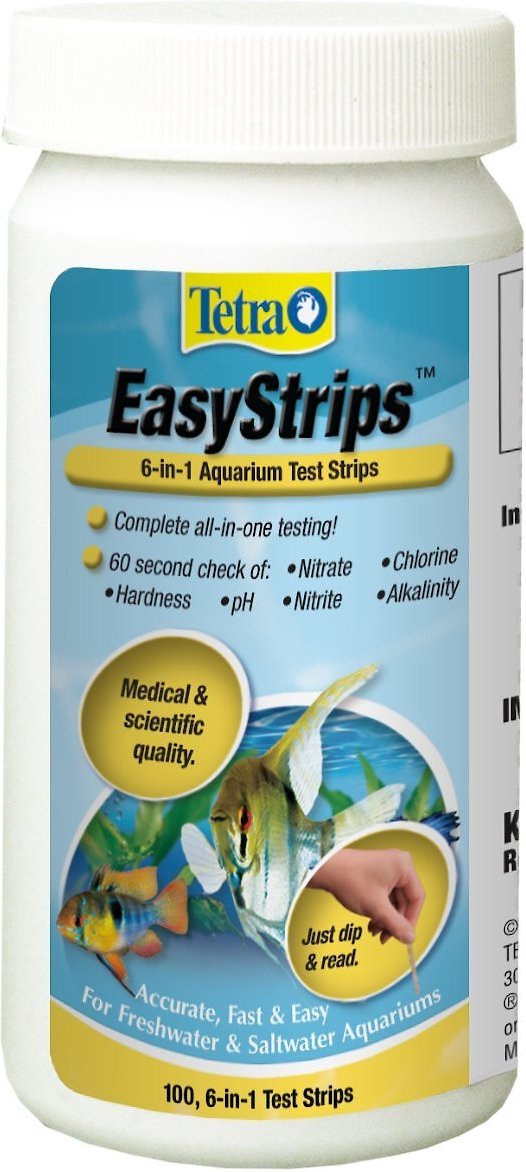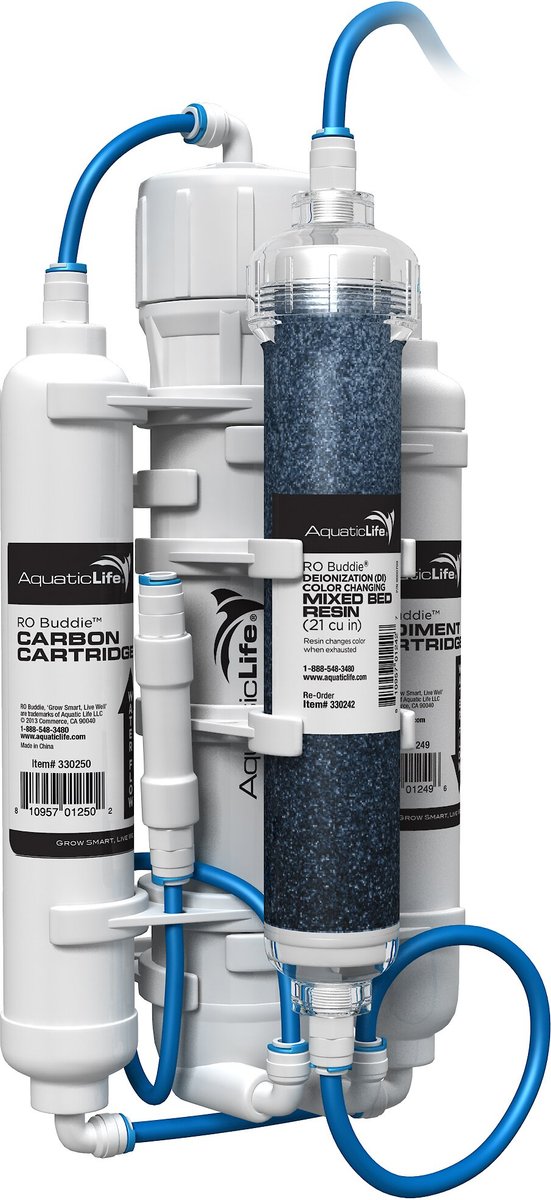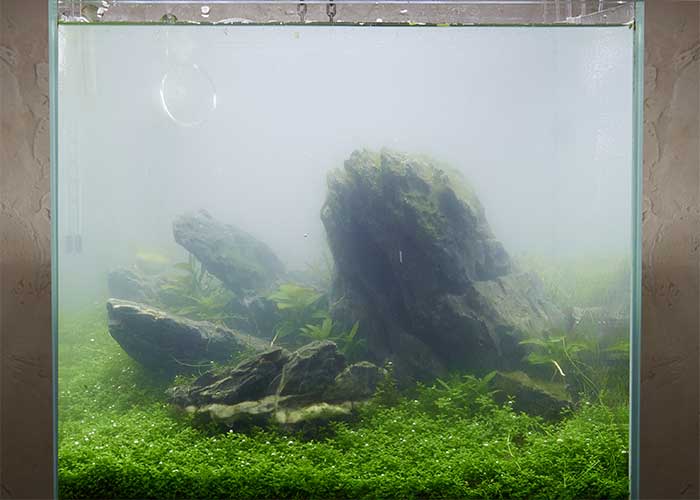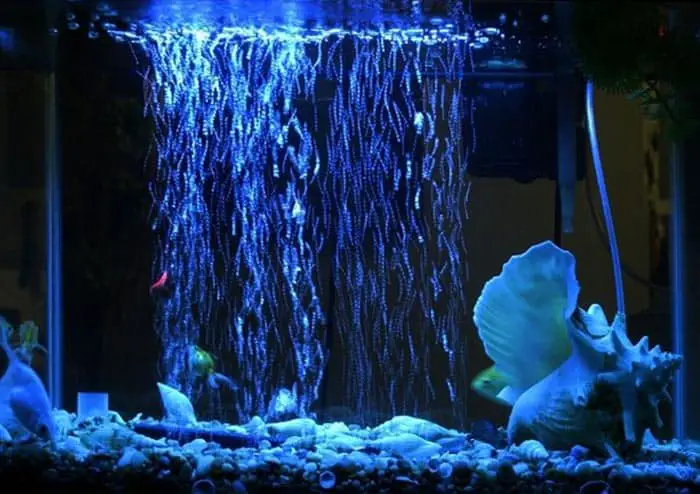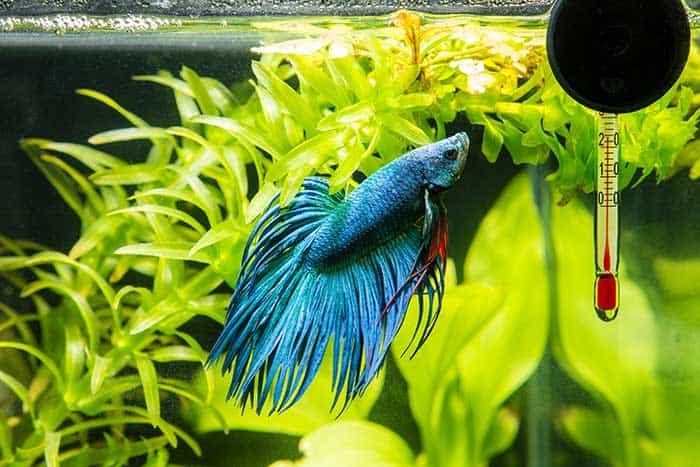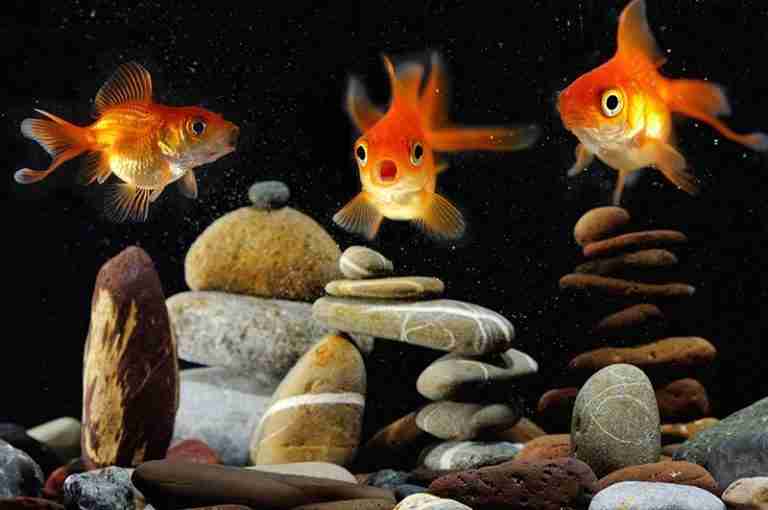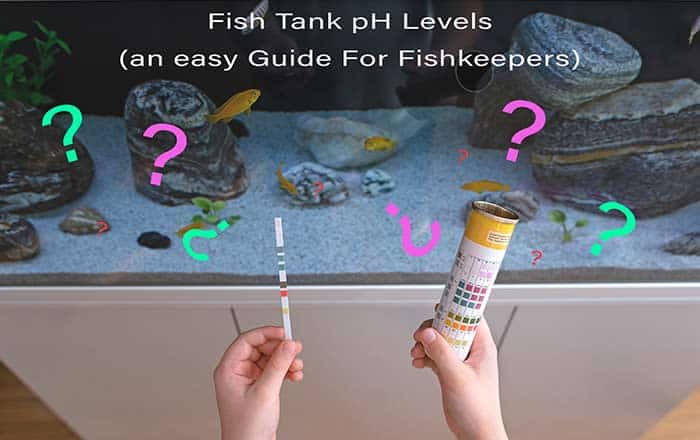How To Lower Alkalinity In Fish Tank Water (Easy solutions)
Maintaining the correct water chemistry in a fish tank is important to the health of your fish, and sometimes it may be necessary to lower the alkalinity in your aquarium. Higher alkalinity levels are often preferred, as they provide a more stable environment and protect the water from drastic swings in the pH level. Understanding how to lower alkalinity in fish tank water is a good tool to have in your arsenal.
Keeping alkalinity levels within a desired range is far more important to reef tanks than it is to freshwater aquariums, but when the total alkalinity level becomes very high or low, it can impact the overall water chemistry of any aquarium.
Below are the most commonly used methods to fix high alkalinity in an aquarium.
There are several natural methods to lower alkalinity in a fish tank, such as:
- Regular water changes.
- Adding live plants.
- Using peat moss.
- Adding driftwood.
And some less natural methods, such as:
- Using a Reverse Osmosis (RO) filter.
- Using a chemical filter.
- Add white vinegar or lemon juice.
- Add distilled water.
If your freshwater aquarium alkalinity rises too high, you need to take some measures to reduce it. Whichever way you choose to lower the alkalinity in your aquarium, make sure the changes happen slowly, as most aquarium fish are sensitive to sudden changes in water chemistry.
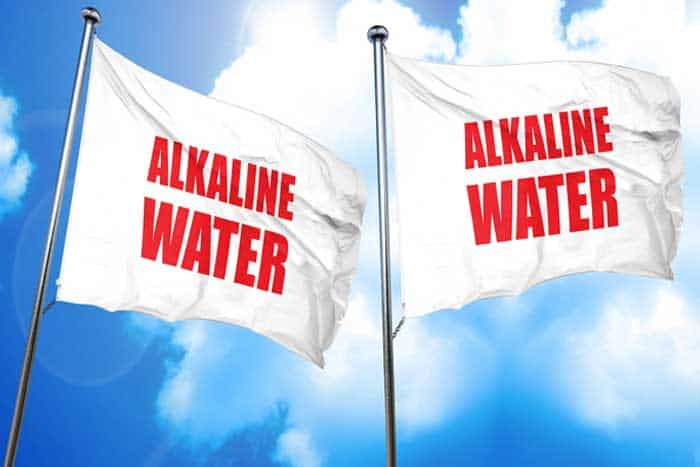
Water chemistry is often made more complicated than necessary concerning aquariums, so in this article, I stick to what you need to know about alkalinity, including how it affects your tank and fish and how to fix high alkalinity using several tried and tested methods.
What Is Alkalinity In Aquarium Water?
Alkalinity is a measure of the water’s ability to neutralize acids. The higher the alkalinity, the more resistant the water is to changes in pH.
Water with high alkalinity is usually considered “hard” water and contains high amounts of dissolved minerals such as calcium, magnesium, and heavy metals.
Dissolved minerals act as buffers by absorbing acids and helping stabilize the aquarium’s pH.
Fish tank water with high alkaline levels is much more stable than acidic water, which is prone to swings in the aquarium’s pH level.
For a full guide on alkalinity, you can read: What Is Alkalinity In Aquariums (In simple terms).
Alkalinity VS pH In Aquarium
Alkalinity is not the same as pH, although they are related. pH measures the water’s acidity or basicity (acid or alkaline), while Alkalinity, or Total Alkalinity, measures the water’s buffering capacity and ability to neutralize acids. In short, alkaline and alkalinity refer to different things.
When talking about alkalinity, or the buffering capacity of water, it is also referred to as KH or Carbonate Hardness, which is also different from GH or General Hardness. Carbonate Hardness refers to the amount of carbonates and bicarbonates in the water and is measured in ppm (parts per million) or dKH (degree of carbonate hardness).
If you look at the pH scale below, you will see that it measures from 0-14, with 0 being acid, 7 neutral, and 14 basic (alkaline). A pH value above 7 is considered alkaline. This pH level is multiplied by 10 for each additional value, so a pH of 9 is 10 times more alkaline than an 8.
Understanding that the pH increases quite dramatically the further you move along the scale explains why aquarium water that is slightly on the alkaline side is not so severe.
Your main aim is to determine what pH is suitable for your fish, create that pH in your aquarium and then maintain a stable pH level by setting a good alkalinity level to act as a buffer against rapid changes.
I wrote an article that should help you to understand aquarium pH levels, and you can learn how to lower pH in an aquarium.
What Should The Alkalinity Be In A Fish Tank?
The alkalinity in a fish tank is important because it helps to regulate the fish tank’s pH level. The ideal alkalinity range for an aquarium is between 4-8 dKH or 70 and 140 ppm. This range helps ensure that the water is not too acidic or too basic, which can harm fish.
You can measure alkalinity levels with a test kit, and you should check them regularly to ensure they remain within the ideal range.
If the levels start to get too low, it is often because the fish produce a high amount of waste. It is essential to increase the frequency of water changes in this case.
Finding the best alkalinity level in a freshwater aquarium helps create a healthy environment for your fish.
How To Measure Alkalinity In Aquarium?
You can measure the alkalinity in an aquarium with a test kit and a water sample. There is an abundance of test kits available, and many can test all water parameters at once.
You test your aquarium water by simply dipping a test strip into the water sample and waiting for the strip to change color. Compare the color changes to a chart supplied. Each slight variation of color tone indicates a different value.
Digital testers are the easiest and most accurate to use, but they only test specific parameters, so you need to purchase a tester for each parameter that requires testing.
The most common test kits are freshwater test strips, which will test for high alkalinity levels and for the presence of nitrites and nitrates. They will also help you to keep a close eye on the aquarium’s pH level and water hardness.
Tetra EasyStrips 6 in 1 Freshwater And Saltwater x 100 Test Strips
Tetra EasyStrips are simple to use and measure 6 of the most common water parameters in freshwater and saltwater aquariums.
Simply dip a test strip into the aquarium water and compare the color change to the included color chart for an accurate result.
This test kit of 100 strips measures chlorine, nitrate, nitrite, general hardness, alkalinity, and pH.
How To Reduce Alkalinity In Fish Tank?
There are several methods to lower the alkalinity in an aquarium, some of which are more natural and gentler. Natural methods have a more prolonged effect on the pH.
Other methods use chemical additives or special filters if you need to lower the pH level quickly. They only have a temporary effect, so you still need to identify why the alkalinity levels keep rising in your fish tank.
All the methods below are suitable for lowering alkalinity and pH. If you need to make drastic changes to the water’s hardness, you need to remove your fish as they won’t tolerate changes in water hardness or pH faster than 1-1.5 pH per 12-24 hour period.
Keep your fish in a holding tank with the original water when removing them. You can then gradually mix some of the softened water into the tank until they have become accustomed to it before adding them back into the main tank.
Carry Out Regular Water Changes
Frequent water changes using a low mineral, soft water source such as rainwater, distilled water, or “RO water” (reverse osmosis water) is a great way to soften aquarium water. Carrying out a water change like this helps to dilute aquarium water and reduce alkalinity.
A build-up of fish waste and other organic matter also affects alkalinity as it decomposes, so some gravel vacuuming should accompany water changes when providing routine maintenance.
It is best to do small water changes (10-15%) every week rather than large ones, which help to reduce stress on your fish. Sudden changes to water chemistry can cause a shock reaction in fish which is sometimes quite severe and may lead to further illness or death.
Add Some Live Plants
Live plants help lower water alkalinity by consuming carbon dioxide and releasing oxygen into the water. If you want to know how to oxygenate a fish tank naturally, live plants are definitely the way to go. Live plants also help keep the water clean by absorbing nutrients.
Adding live plants is a great way to naturally lower alkalinity levels in your tank whilst having many other benefits for your aquarium and its biological processes.
If you have many live plants, you must clean them regularly to remove rotting leaves and food waste that can build and increase ammonia levels.
You can find out how to clean aquarium plants by reading my article: How To Clean Aquarium Plants (Best methods revealed).
Use Peat Moss To Lower Your Aquariums Alkalinity
Peat moss is an acidic soil-like material that you can use to lower the pH and alkalinity of water. It is best to use peat moss aged for at least six months, as this will help minimize the chance of raising the pH levels.
Peat moss can be added to the filter or a mesh bag and placed in the aquarium. As the water passes over the peat moss, it will start to reduce alkalinity.
Reduce Alkalinity With Natural Driftwood
Natural driftwood softens water by releasing tannins, which can help lower alkalinity.
Using untreated natural driftwood will be more suitable for your aquarium than some types that can release harmful chemicals into the water.
Pieces of driftwood can be added to the filter or placed directly into the aquarium and used as a feature. Over time, driftwood releases natural tannins into the water, similar to peat moss which helps lower alkalinity.
In aquascaping, many people add plants to their driftwood, which is twice as effective as you will be using both driftwood and live plants together. You can find a list of plants that are suitable for adding to driftwood in my article: Aquarium Plants That Grow On Rocks And Driftwood.
Use A Reverse Osmosis Filter
One of the best ways to remove alkalinity from water is through reverse osmosis. A reverse osmosis filter removes dissolved minerals by passing water through a semipermeable membrane.
Because reverse osmosis is so effective, it purifies the water until almost no dissolved minerals are left. The process can also remove many of the beneficial minerals and bacteria from water essential to a fish’s health.
Can you over-filter a fish tank using reverse osmosis? Reverse osmosis is a form of over-filtering, so it should only be used occasionally and when pH levels are very high or low. When using reverse osmosis, you should leave some water unfiltered to retain some of the essential minerals, or you will end up with low alkalinity levels in the tank.
Aquatic Life Reverse Osmosis Buddie
The Aquatic Life Reverse Osmosis Buddie is the perfect way to remove minerals and heavy metals from your aquarium water, providing a more neutral pH level.
Although compact and easy to store, this unit is suitable for aquariums of around 50 gallons.
The aquatic life RO Buddie comes with sediment, carbon cartridges, and a mixed bed resin cartridge, which removes the remaining dissolved solids from the water.
Use A Chemical Filter To Lower Alkalinity
Chemical filters bind to dissolved minerals and remove them from the water. They are often used in conjunction with a reverse osmosis filter to remove dissolved minerals.
Chemical filters can be an effective way to lower the alkalinity in an aquarium. Choosing a safe chemical filter for aquarium use is vital, as some can harm aquarium fish.
You must carefully follow the manufacturer’s instructions when using a chemical filter.
Add White Vinegar Or Lemon Juice
Adding any acidic compound to your aquarium lowers alkalinity over time, but it mainly results in a drop in the pH level. Over time, acidic compounds erode the buffering minerals present and reduce alkalinity, but this is not immediate.
A sudden drop in pH caused by adding acidic compounds such as vinegar or lemon juice is only temporary. It’s harder to lower the pH in the long term because of the buffering effect of dissolved minerals absorbing the acids.
When adding lemon juice or vinegar solution, you will need to experiment. Start by adding small amounts and measuring the pH frequently but remove any aquatic life from the tank beforehand.
What If Alkalinity Becomes Too Low?
Care should be taken when lowering alkalinity. When alkalinity becomes too low it causes instability as the water lacks the minerals that act as buffers against pH swings. If you have managed to lower your aquarium’s alkalinity too far, the water will be too acidic, which is the opposite problem.
A slightly too high or low pH will not cause many problems overall. If you have gone much too far and you need to raise the alkalinity of your aquarium water quickly, you can use a chemical treatment such as sodium bicarbonate (baking soda).
Baking soda has a natural pH of 8 and will act quickly to raise the alkalinity, so you must remove your fish to protect them from sudden changes.
The general rule when adding baking soda is 1 teaspoon per 5 gallons of water. This has an immediate effect, but for the best results, it takes time to work through the whole tank.
You can learn more about how to raise the alkalinity in a freshwater aquarium in an article I wrote: 6 Ways To Raise The Alkalinity In A Freshwater Aquarium.
If you are struggling to balance the water parameters in your aquarium, you may need to perform an emergency cycle to get things back in check. Fish tank cycling generally deals with the biological cycle (or nitrogen cycle), where healthy bacteria keep ammonia and nitrites at bay, but these can also affect the pH, so a simple cycle may get you back on track.
Find out more about cycling your tank in the articles below:
How to cycle a fish tank (Step by Step).
How To Cycle A Fish Tank In 24 Hours (Emergency Cycling).
Can Low Alkalinity Kill Fish?
Low alkalinity is unlikely to kill your fish, but it can cause sudden pH swings, which can kill fish that are sensitive to these sudden changes. Some fish suffer a form of shock when water parameters change suddenly, leading to stress and sometimes death.
Low alkalinity in fish tank water usually means a lack of essential minerals that are vital to the health of your fish and other aquatic life. The result of long-term exposure to this type of water is often negative to your fish’s overall health.
Is High Alkalinity Bad For Fish?
High alkalinity in itself is not necessarily bad for fish or other aquatic life, but if alkalinity rises too high, it can be a symptom of water quality problems.
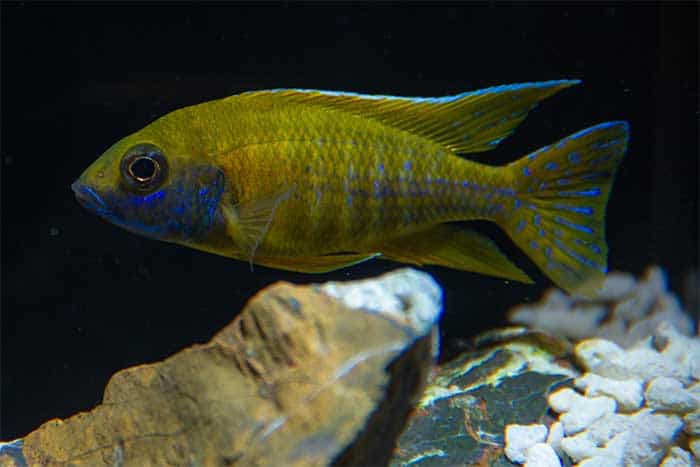
Overly alkaline water can indicate that there is too much dissolved calcium in the water, which can lead to health problems for fish.
Additionally, high alkalinity can make it difficult for fish to regulate their body temperature, making them more susceptible to stress and disease.
As a result, it is essential to monitor pH and alkalinity levels in your tank by taking a regular water sample that can be tested. Once you have detected fluctuating pH levels, you can then take steps to keep them within a healthy range.
If you have any concerns about your fish’s health, consult a veterinarian or qualified aquarium specialist.
Will High Alkalinity Kill Fish?
It’s a common misconception that high alkalinity will kill fish. In reality, high alkalinity can benefit fish, providing a buffer against pH swings and helping maintain a stable environment.
However, there are some circumstances in which high alkalinity can be harmful to fish. If the water is already hard (high in minerals), adding salt can increase the hardness and make it difficult for fish to regulate their body fluids and temperature. In addition, elevated alkalinity can cause problems for fish that are sensitive to sudden changes in pH.
As a result, it’s important to be aware of your aquarium’s alkalinity levels and take steps to keep them within a safe range for your fish.
What Causes High Alkalinity In Fish Tank?
High alkalinity in a fish tank is common, and several different factors can contribute to this problem.
The most common cause of high alkalinity in a fish tank is simply using tap water to fill the tank. Tap water usually contains high levels of minerals, which can quickly raise the alkalinity of a tank.
Too much calcium in a freshwater aquarium will contribute to high alkalinity, and calcium carbonate is often found in high quantities in tap water.
Another common cause of high alkalinity is overfeeding. When fish are overfed, they produce more waste, which raises ammonia and nitrites in the water; this, in turn, raises the pH level and increases alkalinity.
Which Fish Like High Alkalinity?
While some fish species prefer water with high alkalinity, others prefer a lower alkalinity (or acidic) environment. Most fish can adjust to differing water hardness and pH when the changes are gradual, but they will each have a preferred pH and water hardness level based on their natural habitat.
The types of freshwater fish that prefer a highly alkaline environment will generally come from areas such as Central and South America or The Great Lakes Of Eastern Africa. These areas are high in such minerals as phosphates, borates, and limestone, which dissolve into the water, causing it to become hard with a natural buffering ability against acids.
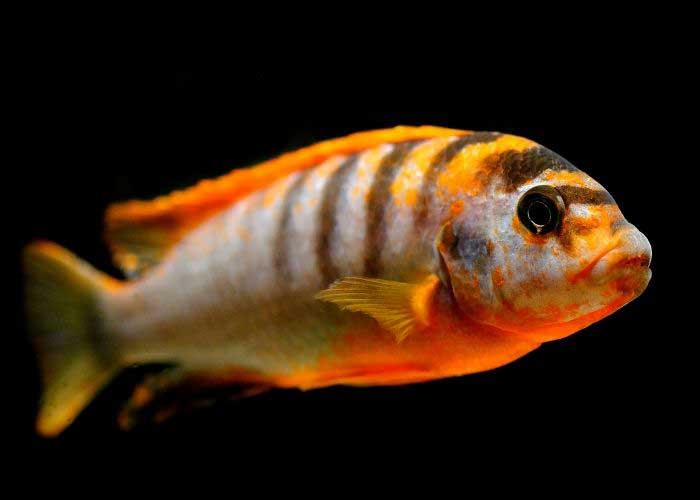
Suppose your tap water is naturally high in minerals. In that case, it will be harder water and have a higher alkalinity level, so it may be easier to stock your aquarium with fish used to this type of water instead of constantly treating it to reduce the alkalinity level.
Some popular aquarium fish for a highly alkaline, hard water environment are:
- African cichlids
- Many Central American Cichlids
- Mollies
- Platies
- Swordtails
- Guppies
- Danios
- Goldfish
- Dwarf Loach
- Clown Loach
The above is just a selection of many fish that will thrive, so you should research each species beforehand. Another critical factor is that your fish may have already become accustomed to softer, more acidic water throughout its captivity.
I mentioned previously in this article that many fish will adapt to most environments as long as the changes are not sudden. There are a few exceptions, such as freshwater discus, which are very delicate and will need software to thrive.
Wrap Up
Throughout this article, I have covered some ways that you can lower alkalinity in a fish tank and explained the importance of alkalinity as a buffering factor to protect from big swings in the water’s pH.
The relationship between pH and alkalinity is close as they directly impact each other. Most fish can adjust to water that has a high level of alkalinity, but fish need the water chemistry to be as stable as possible, and this is more likely when the buffering capacity is higher.
Very high levels of alkalinity can become a problem for the health of your fish, so you need to lower the alkalinity level if this is the case.


